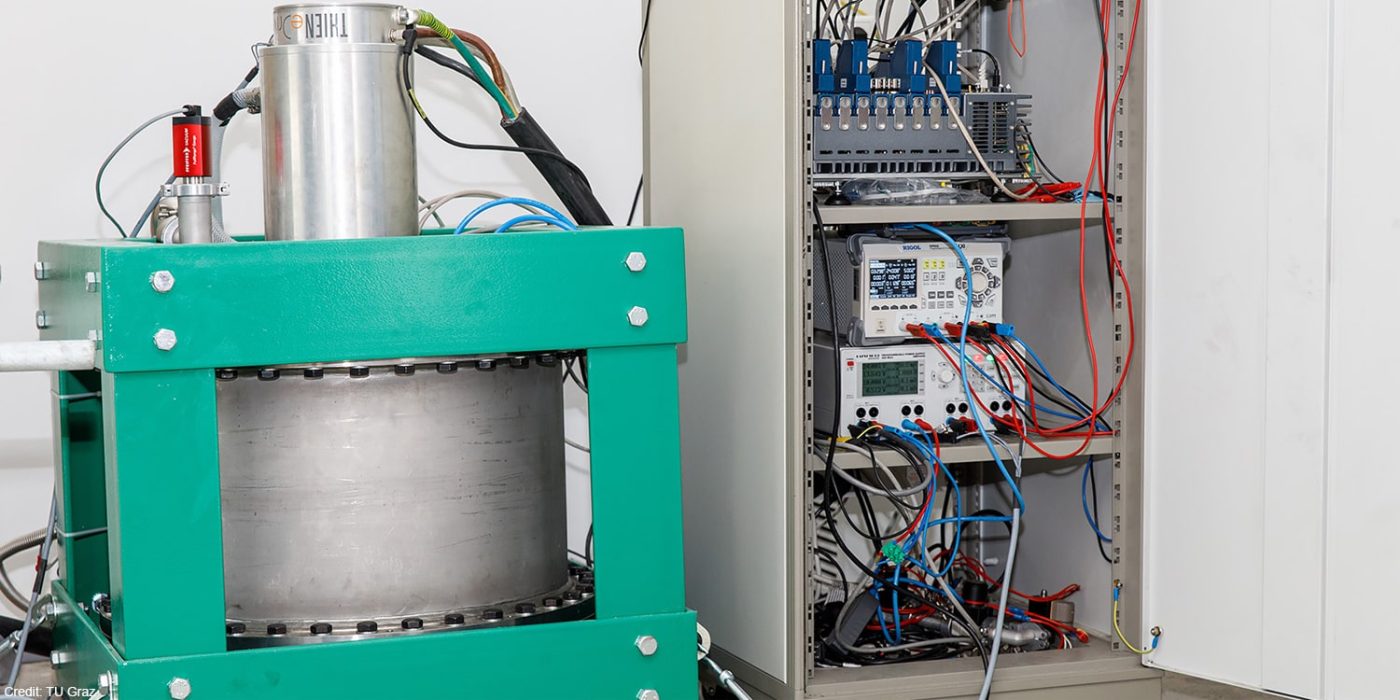Austria-based consortium presents FlyGrid energy storage
In Austria, under the leadership of the Technical University of Graz (TU Graz), a consortium of universities, energy providers, companies and start-ups have presented the prototype of a flywheel storage system called FlyGrid. This was integrated into a fast-charging station and is meant to enable improved use of renewable (and thus fluctuating) energy sources.
The buffer storage system prototype has a capacity of 5 kWh and a charging power of up to 100 kW. According to TU Graz, larger storage quantities should be possible thanks to the prototype’s modular design.
For mechanical energy storage, a rotor – the eponymous flywheel – is accelerated to a high speed by means of an electric motor and the energy is stored as rotational energy. If the rotational energy is to be used, the storage unit transfers it to a generator. The rotor is made of carbon fibre so that it is robust and can withstand a high centrifugal force. This is decisive for the amount of energy that can be stored.
The electric motor is made by Thien eDrives. The press release states that the consortium chose a reluctance motor because it “does not require magnets or rare earths”. Since the motor needs energy to keep the rotor spinning and thus store energy, the battery discharges without a constant energy supply. “Without an energy supply, the storage is completely discharged after about 25 hours,” the consortium explains. “Therefore, FlyGrid should be seen as a short-term storage system that is only profitable if energy is often fed in and also withdrawn.”
Project leader Armin Buchroithner from the Institute of Electrical Measurement and Sensor Systems at Graz University of Technology (TU Graz) explained that increasing electrification of transport and heavy industry as well as the expansion of intermittent renewable energy sources, are a challenge for electricity grids. “Therefore,” he says, “it is important to offer solutions that on the one hand relieve the electricity grid and on the other hand facilitate the use of e-mobility,” he extrapolated. “In addition to solutions such as chemical batteries or pumped-storage power plants, FlyGrid’s flywheel storage offers a long-lasting system that provides high performance. This makes FlyGrid a useful addition that supports the shift to renewable energy on a smaller and larger scale.”
Initial tests have already taken place at the University of Leoben in Austria. The prototype has been handed over to Energie Steiermark and put into operation to further test and improve it under real conditions. TU Graz notes that the complete development and production of the FlyGrid took place in Austria.
In addition to energy storage and delivery, the project has developed a holistic concept around the storage unit that will also consider aspects of energy supply, grid load and charging infrastructure. This is reflected in the intended areas of application for FlyGrid. Among other things, local intermittent energy sources such as photovoltaic systems are to be integrated. The consortium partners say FlyGrid could also be used as a mobile fast-charging box, e.g. for electrified construction machinery. In the field of charging technology, project partner Easelink has contributed its fully automated charging system Matrix Charging.
This project is funded by the Austrian Climate and Energy Fund, carried out as part of the “Lighthouses of Electromobility” programme.






0 Comments